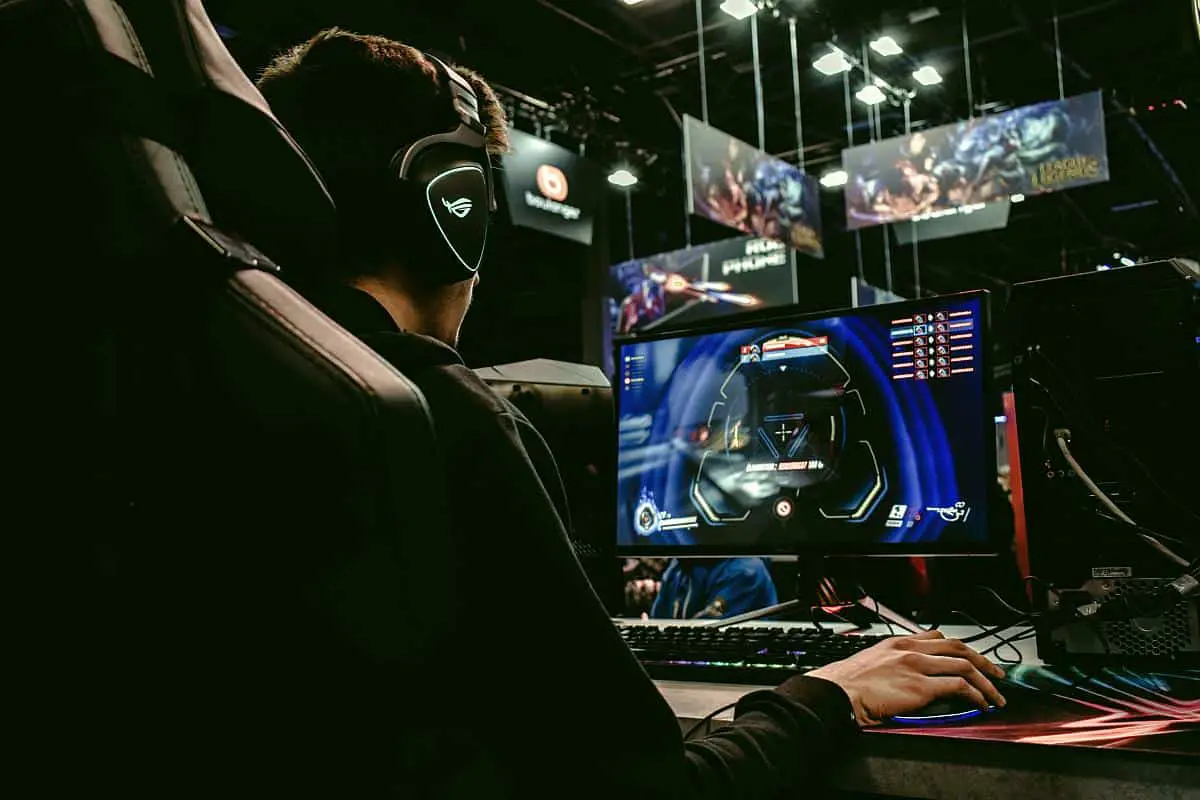AMD vs Nvidia : Who Makes Better Graphic Cards?

AMD vs Nvidia? The debate between which company makes the best graphics card is still ongoing, and it’s time to shed some light on this argument.
In this article:
AMD vs Nvidia Graphics Cards for Gaming
History of the Two Companies
AMD
AMD, or Advanced Micro Devices, was founded over 50 years ago when the company first started manufacturing microchips for other vendors. When the company grew, they started buying other companies as well, like ATI Technologies.
ATI Technologies was responsible for AMD’s GPU division. Today, their GPUs are released under the Radeon brands.
GPU Definition: A GPU, or Graphics Processing Unit, is an important part of the PC that helps in the rendering of images to display on the monitor. A good GPU brings smooth and highly detailed pictures to your monitor.
AMD also has a CPU division that’s manufactured in different companies like TSM, Samsung, and GlobalFoundries. Their CPU products are distributed under the brand name Ryzen.
CPU Definition: A CPU, or Central Processing Unit, is often seen as the brain of the PC because it reads basic instructions and executes them. When you type on your keyboard or move the mouse, the CPU reads them and executes them from memory.
Nvidia
Nvidia is a younger company compared to AMD. The company was founded only in 1993, with their main focus since the beginning being designing graphics cards.
This allowed them to be worthy competitors to AMD since the beginning. Their first major products, TNT and TNT2, were the most successful graphics cards that handled 2D and 3D graphics respectively during the late 90s.
They introduced the very first GPU in 1999, along with some hardware support. Today, their GeForce brand is in its 17th generation and has been in the market for over 20 years.
Nvidia continues to be a company that designs their GPU, but they rely on other companies like TSMC and Samsung to manufacture them.
Performance

When it comes to performance, there’s no surprise that Nvidia is leading. Their high-end graphics cards have features like AI-controlled supersampling and real-time ray tracing.
However, when it comes to value for money, AMD may prove to be the winner.
Nvidia’s powerful hardware is perfect for gamers who are playing in 4K. With 1GB GDDR6 of video memory, the RTX 2080 Ti is one of the most powerful graphics card available on the market.
However, if you’re not going to be playing in 4K and just want to settle for Overwatch with a high FPS rate at 1080p, then go with AMD. The AMD Vega 64 can compete with RTX 2070, but even a mid-range RX 580 can deliver the same display output.
Pricing
AMD is definitely the more budget-friendly brand for graphics cards, but this doesn’t mean it can’t compete in performance.
Some of AMD’s more affordable alternatives can perform a lot better than Nvidia’s expensive high-end cards. AMD’s Radeon RX Vega 56, priced at $400, can outperform Nvidia’s GeForce GTX 1070, which can break the bank at $650.
Hardware
Similar to performance, Nvidia is leading in hardware. Their graphics cards consume less power, have better cooling systems, and have a better computing performance.
AMD competes in hardware by increasing the memory bandwidth of their graphics cards to make up for their shortcomings in the processing department. However, their cards are power hungry and can heat up very easily.
Both companies use similar core technologies — CUDA cores and stream processors, which perform just about the same.
AMD is also catching up to Nvidia’s Turing models with a 12nm GPU to AMD’s Polaris series has 14nm GPUs. AMD is also introducing Navi microarchitecture, which will heavily compete against Nvidia when it comes to the fabrication process.
Related Link: 9 Best Gaming Monitors You Can Buy On Amazon For Less Than $500
Software
Software optimization is important to help regulate the GPU’s hardware. These are the drivers and the control panels that help adjust your graphics card’s performance.
When it comes to drivers, both AMD and Nvidia have stable drivers, but when it comes to control panels, AMD’s Control Center has a nicer interface with a modern and clean design.
Nvidia’s Control Panel looks a lot more dated, as if it’s still running on Windows XP. However, both control panels have the level of functionality best suited for their respective GPUs.
Drivers and Features

It’s time to take a closer look at the different drivers and features each company has to offer.
Streaming and Recording
Streaming and recording your gameplay takes a toll on your FPS rate and can mess with your gaming session. You need a fairly decent graphics card that comes with a good streaming software to enjoy a stable FPS.
Nvidia’s streaming software is ShadowPlay and it can capture a higher video quality for both streaming and recording compared to AMD’s ReLive.
However, both streaming software perform almost the same in all other areas. At most, their GPUs can stabilize your FPS at 30 or 60 while capturing video at a 1080 resolution.
Vertical Synchronization Substitute
What is vertical synchronization substitute? Vsync is an essential driver in video cards that allows the computer monitor to synchronize with the frame rate of the game for a more stable display.
A Vsync driver is essential to prevent screen tearing. It caps the GPU’s frames to keep its output close to 60Hz even if the monitor goes up to 144Hz or 240Hz.
Both AMD and Nvidia have their Vsync software for this purpose. They are both hardware-reliant with adaptive sync to always adapt the refresh rate of the monitor and prevent input lag and screen tearing.
However, both AMD’s FreeSyncFirst and Nvidia’s Gsync are only compatible with their own graphics cards and monitors. The monitor needs to have a built-in scaler module that suits each system software.
For Nvidia’s Gsync, the monitor manufacturers need to buy a license to implement Gsync technology into their monitors, which makes their products a lot pricier. On the other hand, AMD offers a more liberal approach by allowing FreeSync to work on any scaler module.
Reviews
Wondering how those in the gaming industry weigh in on this debate? Check out these reviews from PCGamesN and Gaming Scan.


Still can’t decide which side you’re on in the “AMD vs Nvidia” debate? The ongoing debate between which is the better graphics cards developer doesn’t seem to have a conclusion in sight since the two companies continue to produce new GPUs that can compete with each other.
Learn how graphics card work in this video from gameranx:
Fortunately, this is great news for gamers, since it means there will always be new components released to suit their performance preferences and budget. We hope this guide has helped you understand more about these two companies and hopefully given you an idea on which one to look more into, should you be in the market for a new graphics card.
Do you have more questions about AMD and Nvidia graphics cards? Ask away in the comments section below!
Up Next: Troubleshoot Common Video Card Problems With These Simple Fixes







